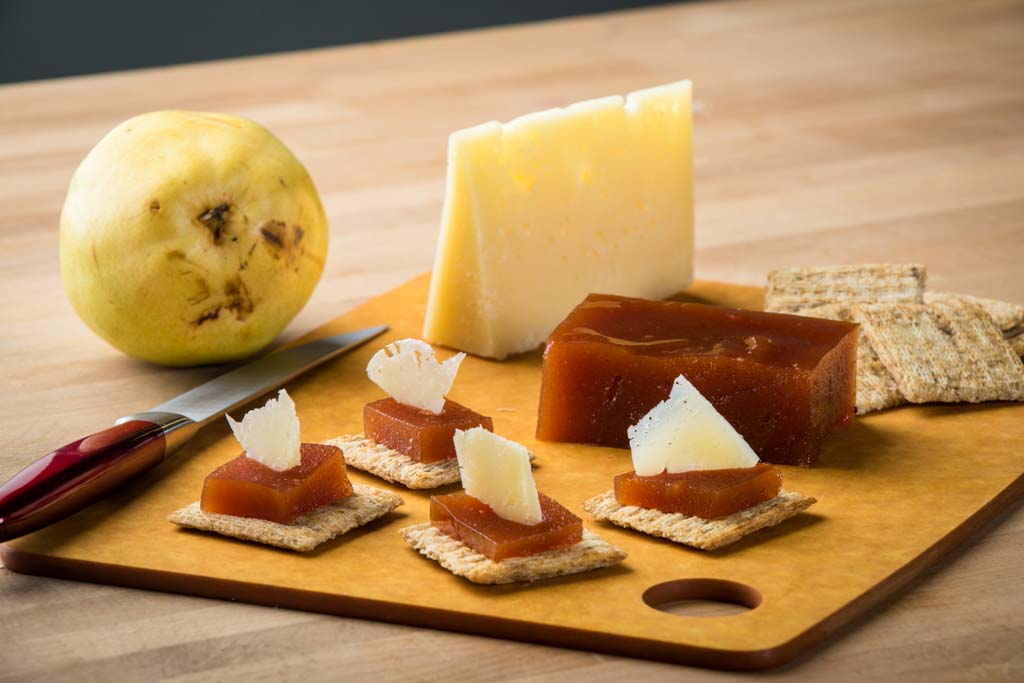When talking about fruits that are seasonal in winter, it kind of feels like cheating to cite citrus, kiwis and pomegranates. Yes, they are in season during what we call the winter months, but they actually dislike cold and snowy winter weather. Grown in warmer climates, they travel long distances to satisfy our craving for something juicy and bright during the winter.
I could also mention the abundance of fall apple and pear varieties available throughout the Inland Northwest. Both ripen into fall and store well in the cold. Many of us also have a wild and wormy tree growing in our back yard or the empty lot down the street.
However, I want to focus on some lesser-known fruits that grow locally in the colder months. These toothsome gems will brighten even the cloudiest winter day.

>> Cranberries
Cranberries are native to North America and were first cultivated near Cape Cod, Mass. around 1820. The first cranberry bed in the Pacific Northwest was established with Massachusetts vines in Coos County, Ore. in 1885. Today, British Columbia, Oregon and Washington are three of the seven largest cranberry growing regions in North America.
While this Thanksgiving meal staple is cultivated by some North Idaho farmers, like Killarney Farm in Cataldo, it also grows wild in some areas. As with huckleberries, cranberry pickers fiercely protect the location of local patches. But you can often find Idaho berries in October and November at a handful of grocery stores: Pilgrim’s Market in Coeur d’Alene, Rocket Market in Spokane, and the Moscow Food Co-op.

>> Quince
Quince is a pectin-saturated fruit that looks like a misshapen apple and is native to the woodlands of South-West Asia, Turkey and Iran. It also grows in North Idaho. Believe me, I have seen a tangled quince tree growing in the corner of a Coeur d’Alene yard.
The dense texture of this fruit makes it difficult to eat raw, but its heady fragrance suggests delicious possibilities. When cooked with sugar and water, the pale pulp turns a luscious burgundy color and thickens into a paste or “cheese.” Quince cheese is an integral ingredient of Christmas celebrations in the Philippines and the French region of Provence. The firm reddish paste is usually sold in viscous, gelatin-like blocks but is also easy to make at home. It is a decadent treat spread on buttered toast, stuffed into pastries or paired with manchego cheese on a light cracker.
Story continues after a quick message from our sponsor below.
>> Persimmon
It is a little known fact that persimmons are berries. Native to and prolifically grown in Japan, China, Korea, Burma and Nepal, persimmons thrive in USDA hardiness zones 4 to 11 (North Idaho’s zones are 5-6)*. Their botanical name, Diospyros, literally means “food of the Gods” – if you have ever tasted the creamy, succulent, sweet-spicy flesh of one of these fruits, you will know that this moniker is fairly accurate.
There are several types of persimmons, ranging in flavor, color, texture and size. Very ripe persimmons are tasty eaten raw with a spoon. Asian fruits are typically dried and eaten as a snack or dessert. In the U.S., we have an abundance of dessert recipes, the most popular of which is persimmon pudding. This baked pudding, featuring a consistency similar to pumpkin pie, is the star of Mitchell, Indiana’s annual persimmon festival and persimmon pudding contest.
By S. Michal Bennett
As Featured In: Winter/Spring 2017



